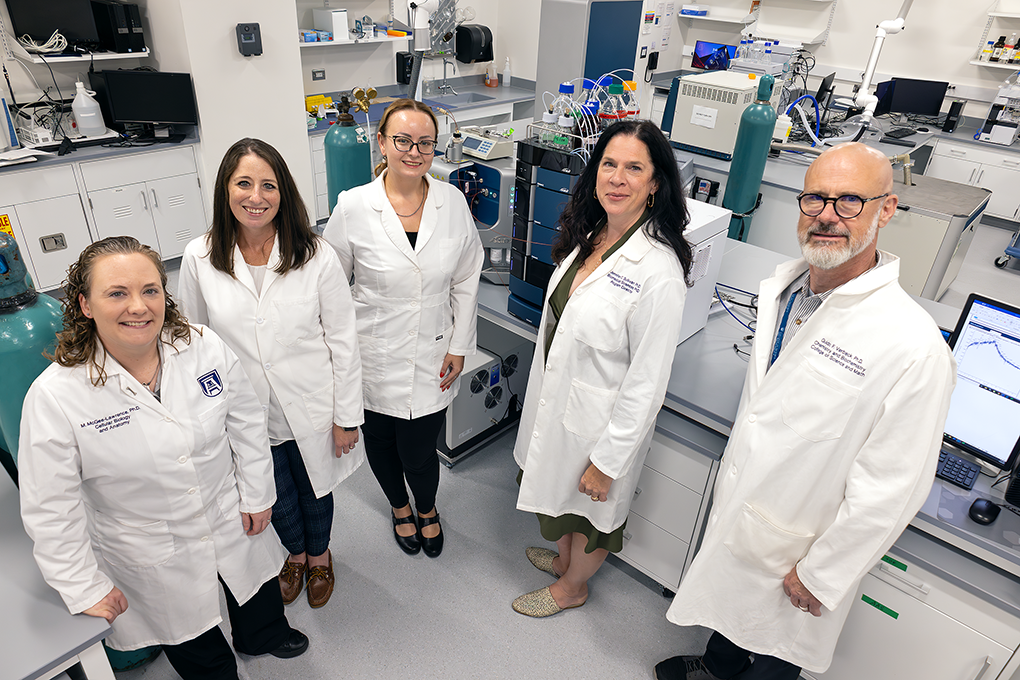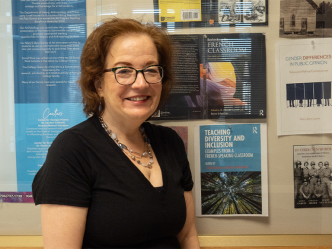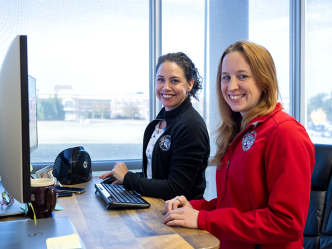According to the National Institutes of Health, one in three adults in the United States has metabolic syndrome, or a cluster of conditions that raise the risk of heart disease, stroke, diabetes and other life-threatening health conditions.
This is why faculty researchers at Augusta University have joined together to form a lipidomics group and have acquired state-of-the-art lipid analysis instruments to conduct research for various projects.
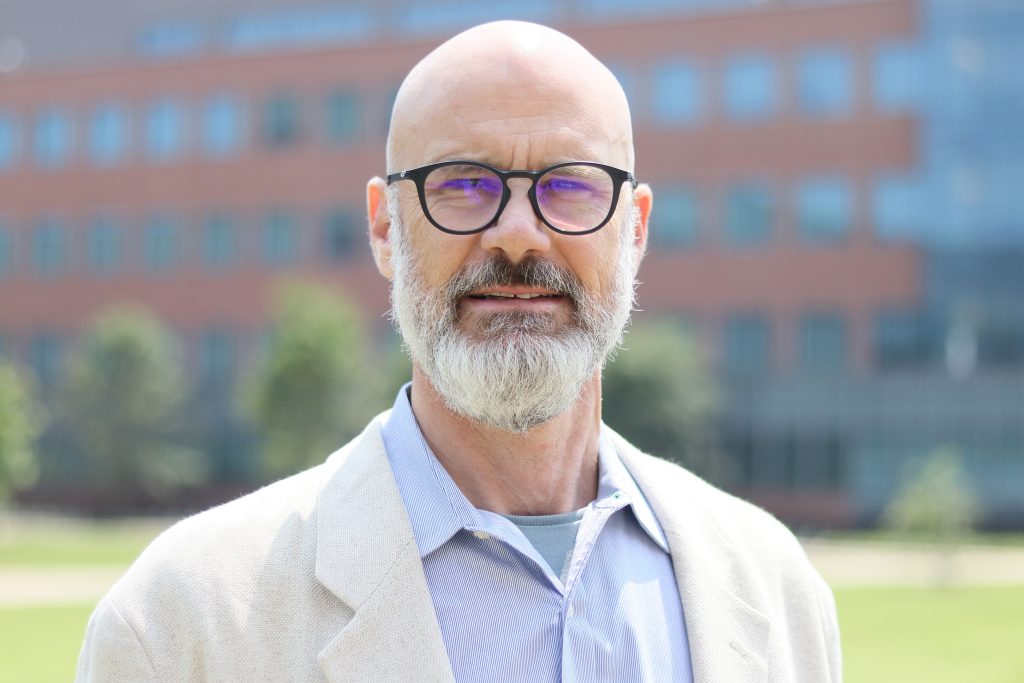
“Lipidomics tends to the bottom floor of what’s going on in your metabolism. You’ve got your genetics, you’ve got the proteins that are being created, but if there’s some sort of disorder in the body, you will see it in the fat metabolism,” said Guido Verbeck, PhD, chair of the Department of Chemistry and Biochemistry and associate dean for research in the College of Science and Mathematics. “Knowing what those fats are and what they do can help us control diets, change our environments, those types of things. Lipidomics is really, really important, but it’s such a broad class that it does take a lot of instrumentation and a lot of people to solve these problems.”
Lipids are more than fatty, waxy or oily organic compounds found in the body. They’re essential to storing energy in cells, communication between cells, cell membrane formation, nutrient absorption, hormone signaling and diagnosing and managing health conditions.
Triglycerides, phospholipids and steroids like cholesterol fall into lipid categories, and scientists can use these compounds to target and develop treatments for lipid-related conditions, such as metabolic disorders and cardiovascular disease. Based on recent studies, researchers with access to tools and resources to conduct lipid analysis are needed now more than ever.
The group is composed of Verbeck, Jennifer Sullivan, PhD; David Hess, MD; Meghan McGee-Lawrence, PhD; Jessica Faulkner, PhD; and Daria Ilatovskaya, PhD. Each of the members works in a specific area of research and applies their lipidomics findings to their respective projects.
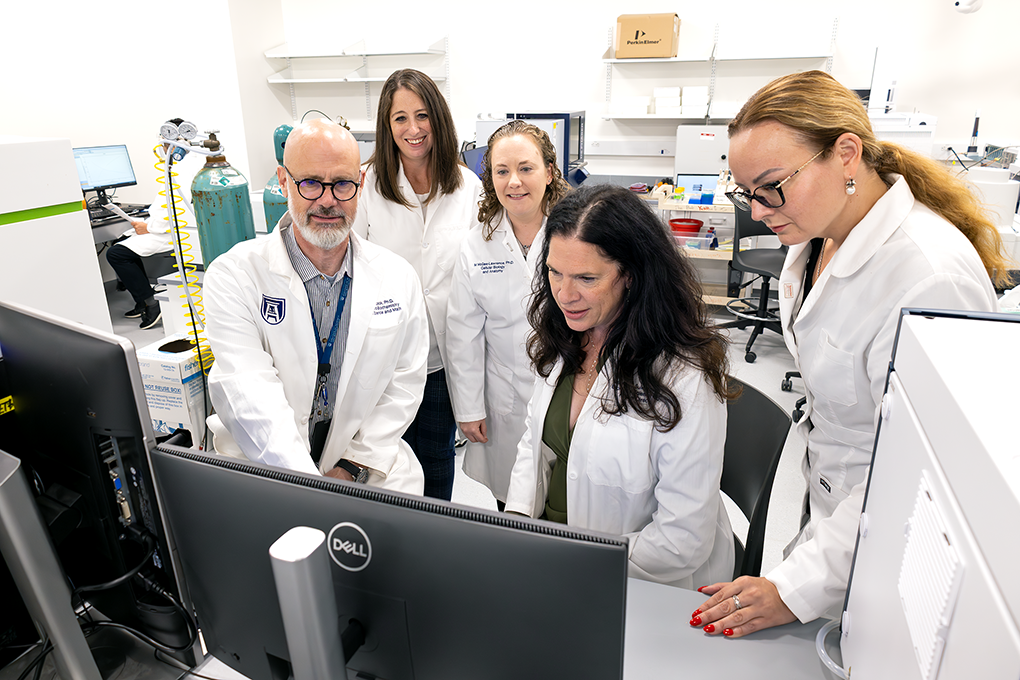
To get the most out of their studies on lipids, they needed to have advanced instrumentation. Hess, the executive vice president of Medical Affairs and Integration, interim executive vice president of Research and Innovation, and dean of the Medical College of Georgia at Augusta University, and McGee-Lawrence, chair and regents’ professor of MCG’s Department of Cellular Biology and Anatomy, were able to secure a Quadrupole Time-of-Flight mass spectrometer, or Q-TOF, bringing the total number of instruments to four.
“A Q-TOF is an instrument that lets us not only identify the mass of each one of the components, but we can also break the molecule down and determine what it is and how it’s put together,” Verbeck said.
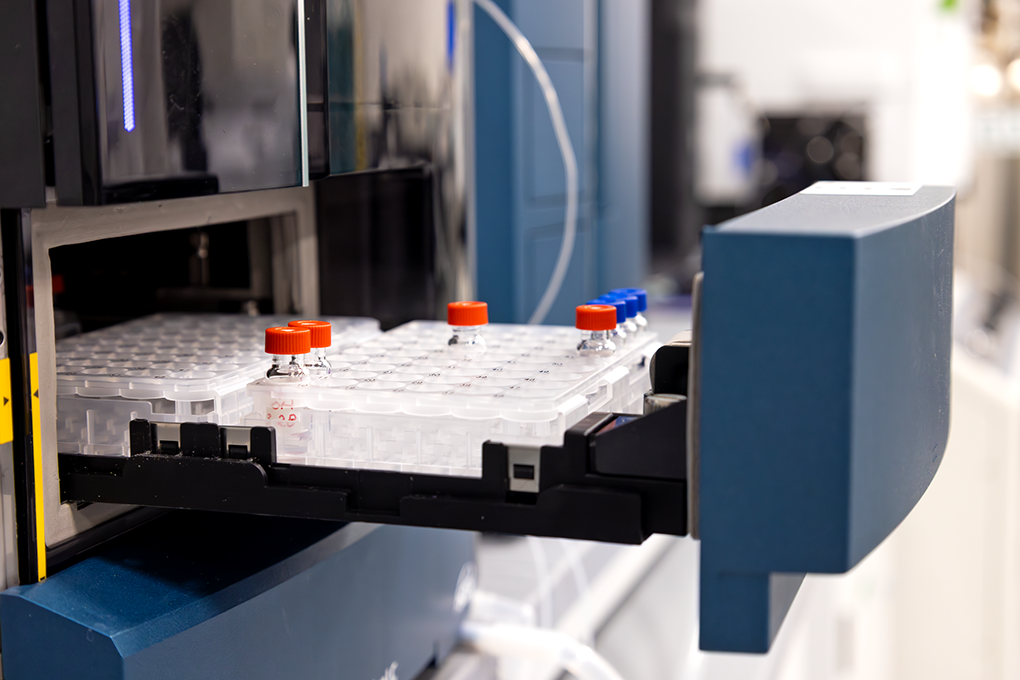
Verbeck explained that unsaturated fats have double bonds, but the location of those bonds isn’t known. The Q-TOF breaks the molecule apart to pinpoint where the double bonds are.
He said the mass spectrometer also has high-resolution software that allows the team to run a large, untargeted lipidomic profile. Targeted lipidomics focuses on specific fats researchers aim to find, but, for some metabolisms, they don’t know what to look for, so they need an untargeted approach to see everything in the molecule. It allows them to analyze entire samples, even using AI to link certain diseases with specific expressed molecules.
The instruments, housed in the College of Science and Mathematics, also allow investigators to test lipid samples in-house rather than shipping them off to other institutions.
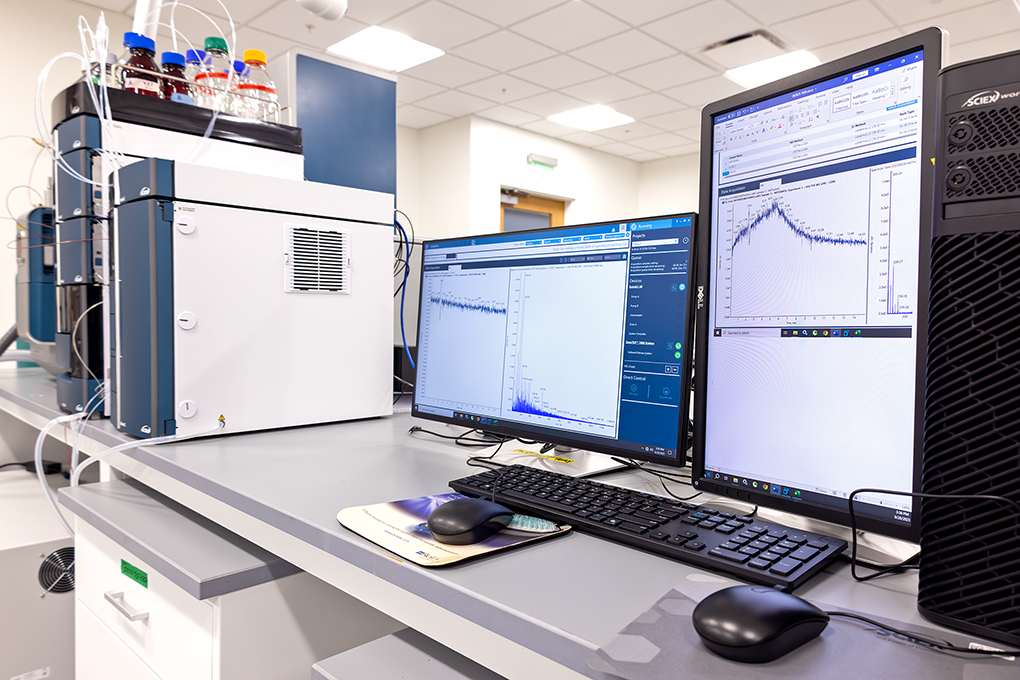
“It’s more real-time analysis. It allows us to respond to errors, or, if we’re going to do an untargeted approach, for instance, you can switch it to a targeted approach very quickly. In fact, you could do it the same day,” Verbeck said. “Or if we see something that’s of interest, we can target it and analyze it right then on the instrument. The greatest thing for me is the training – we can train all of our postdocs, our grad students and our undergrads with this equipment and prepare them for this field. And this field is hot right now.”
With new instrumentation also comes the need for adequate funding to support the research. Earlier this year, Sullivan, dean of The Graduate School, was awarded a $4.4 million grant from the American Heart Association as part of its project titled “Strategically Focused Research Network Cardiovascular Kidney Metabolic Syndrome: Heterogeneity in Women.” The project aims to study the ways risk factors for cardiovascular and kidney diseases impact women.
Sullivan’s research is aimed at analyzing whether women have a higher increase in blood pressure due to dietary factors compared to men, and, if so, whether it is related to women having different metabolic and lipidomic pathways than men.
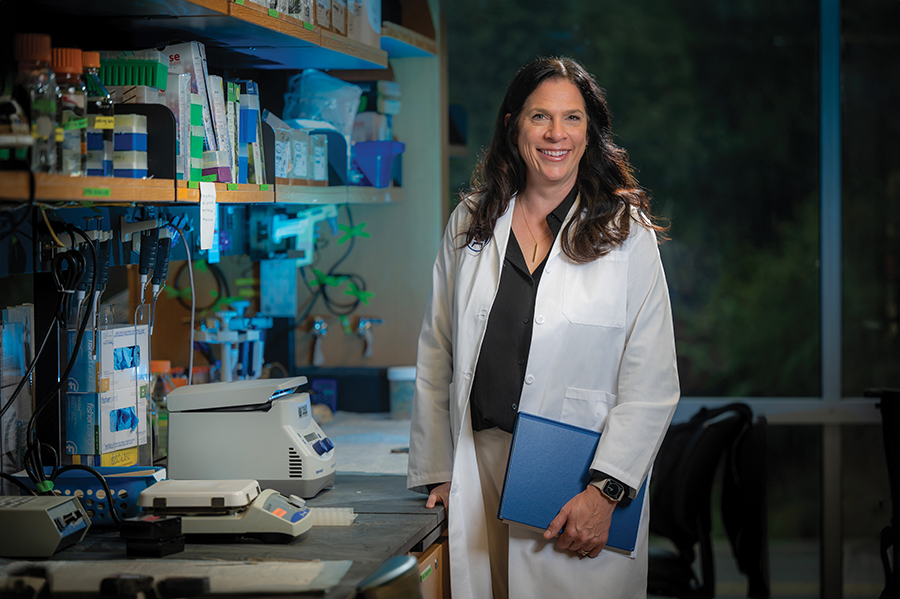
“Our data does suggest that. There are unique long-chain triglycerides that you see in females that you don’t see in males and aren’t present in the diet. What we’re going to be able to do with Dr. Verbeck is get a full understanding of what the lipid profile is at multiple levels,” Sullivan said. “We’re looking at free fatty acids, looking at the localization of them. Being part of this group gives us access to something that you don’t have in most places, so we can ask those bigger questions because we now have the expertise right here in our backyard.”
Having a group of researchers from different scientific backgrounds bouncing their knowledge and ideas off each other can only elevate the work they’re doing, Sullivan explained.
“You’ve got basic scientists, you’ve got a chemist and you’ve got epidemiologists working together, maximizing our ability to ask questions that none of us could ask alone,” she said. “Think about synergy. This is going to allow us to synergize a lot of different things and ask questions that we couldn’t have asked without this.”
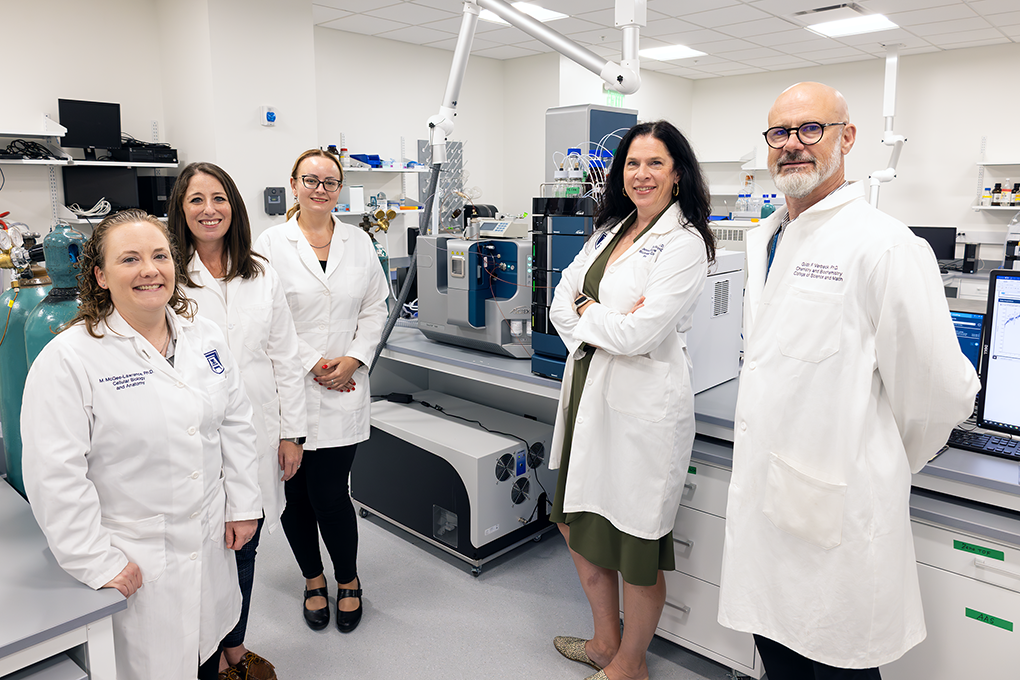
Ilatovskaya, the graduate program director for the Doctor of Philosophy in Physiology program, and Faulkner, an assistant professor in MCG’s Department of Physiology, work closely with Sullivan in the lipidomics group as their projects pertain to SFRN. But McGee-Lawrence is utilizing the instruments from a musculoskeletal perspective.
She’s a project PI and core director on a nearly 15-year-old Project Program Grant at AU that studies musculoskeletal aging. She and her team are currently working on the third cycle of the grant, and much of their data points toward altered lipid metabolism being responsible for changes that lead to musculoskeletal decline during aging.
“Because of that, we needed a way to build on that to have a better focus on lipid metabolism and lipid signaling, and so that’s when we got involved with Dr. Verbeck’s lab,” McGee-Lawrence said. “We obtained the new instrument through MCG funding so that we can start to answer some of those next-level questions.”
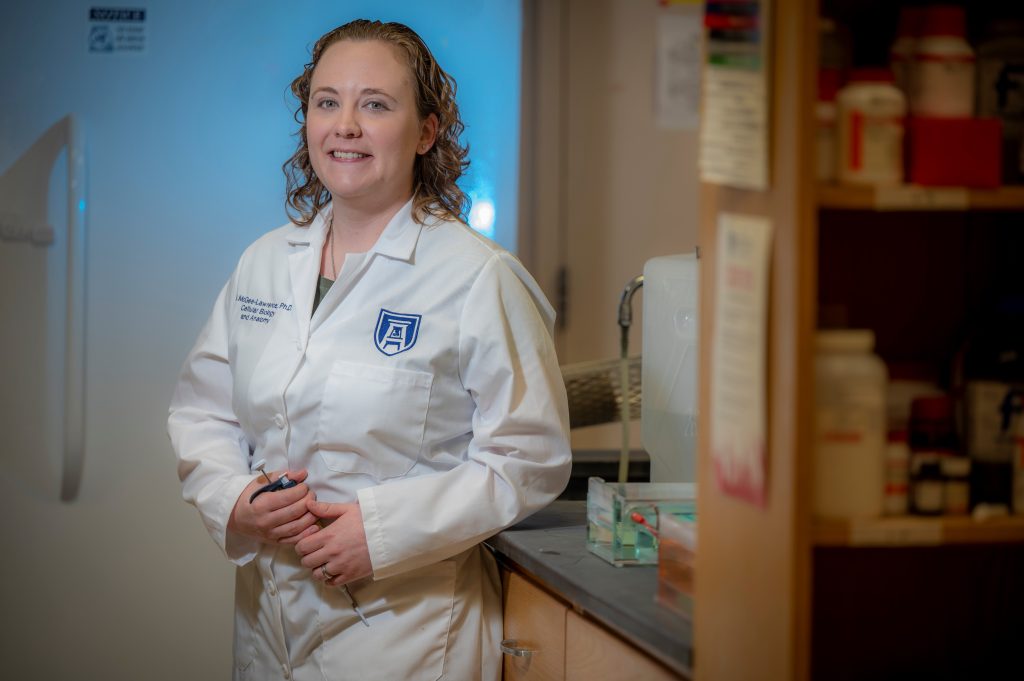
The team is grateful to have institutional support at AU that invests in these kinds of facilities that support a large number of grants and researchers, whose ultimate goals are to keep people healthier for longer.
“In the Program Project Grant, the overall goal is to prevent loss of musculoskeletal strength and mobility with aging. If you can keep people moving and keep them healthy, they’re going to have a longer health span, and learning about these molecules is the next step,” McGee-Lawrence said.
Moving forward, Verbeck wants the door open for researchers from other health sciences fields within the university to use the instrumentation for their projects, thus resulting in clinical outcomes.
“We really want to open this up. I just hired a postdoctoral researcher whose specialty is in Alzheimer’s disease, and I’m interested in adding that to our metabolic map, too, and so are a lot of people here who study neurodegenerative disorders,” he said. “We have the ability to build something really big here.”
Discoveries at Augusta University are changing and improving the lives of people in Georgia and beyond. Your partnership and support are invaluable as we work to expand our impact.
 Augusta University
Augusta University
